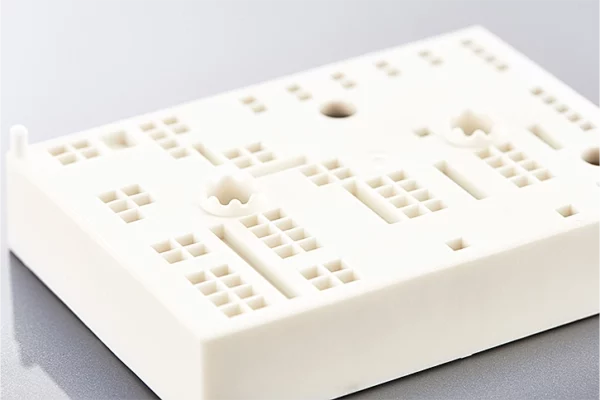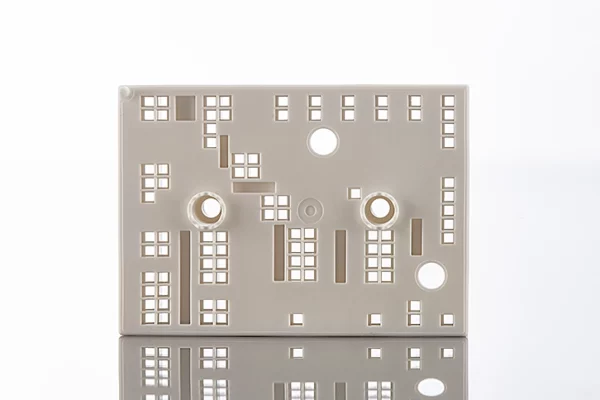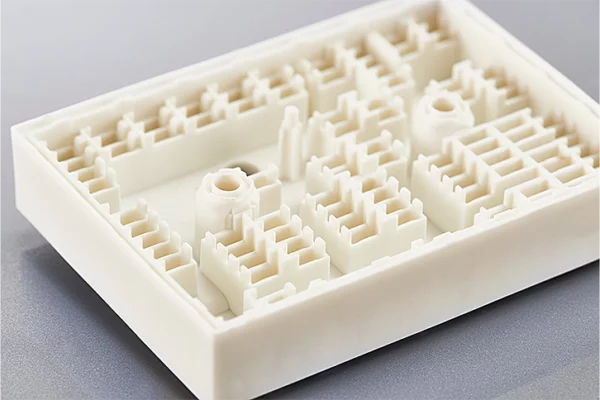Requirements
On behalf of a leading manufacturer of power electronics components, we took responsibility for the holistic conception and manufacturing of this electronics casing, which, due to its field of application, has particularly high requirements surrounding the materials, processing and durability.
The enclosure is used in the area of current control and has to be designed so that it is correspondingly robust against the frequently extreme temperatures, fire and current fluctuations. Accordingly, the material specification by the customer fell on a highly resistant plastic which requires a particularly high accuracy in the tool. With an output volume of more than 1,800,000 units per year and a comparatively long series life, this plastic component required our entire interdepartmental experience and processing expertise.
Process
Due to the high resistance to leakage current and the resistance requirements, an aggressive and distortion-prone thermoplastic is used, a PBT polybutylene-ether-phthalate GF 25% V0. To achieve the required flatness and connection dimensions, it was necessary for us to plan out several correction loops from the start and to simulate both shrinkage and warping in a mold-flow analysis under conditions close to series production. The data and findings obtained are directly incorporated into the production-oriented design of the component, the tool and the injection molding machine.
To ensure the long series running times, only high-quality and durable steel grades are used in the toolmaking. Aligned hot runner technology and the latest injection molding machines with clamping forces of 50 to 300 t bring the plastic melt into shape precisely and uniformly. After the successful curing, the components are removed with grippers developed in-house.
Thanks to a consistent measurement and correction strategy, the stability and efficiency in the process can be ensured. Each process step is continuously monitored using measuring machines, gauges, dial gauges and calipers, and documented in the CAQ system. Finally, the electronics casings are sorted into special ESD (electrostatic discharge) capable reusable packaging. These are designed for use in clean rooms to ensure the cleanliness of the subsequent process steps.
Result
Our customer benefits from a very good and consistent level of quality in the high unit volume range. High-cost remedial work can be reduced to the minimum. All process steps are carried out and monitored in-house: Process development, tool design, toolmaking, manufacturing and assembly. On the one hand, this shortens the development and production phase, and on the other, it makes the process more cost-effective and compact. All the departments work together on an integrated and responsive basis. As a result, no time is wasted on unnecessary transport routes, the coordination of suppliers or other time-consuming processes. Each step in the process chain is cost-effective and configured for a long series duration.
Convinced?
Start your project now
Call us or write to us. Let’s take your idea to series production together.



